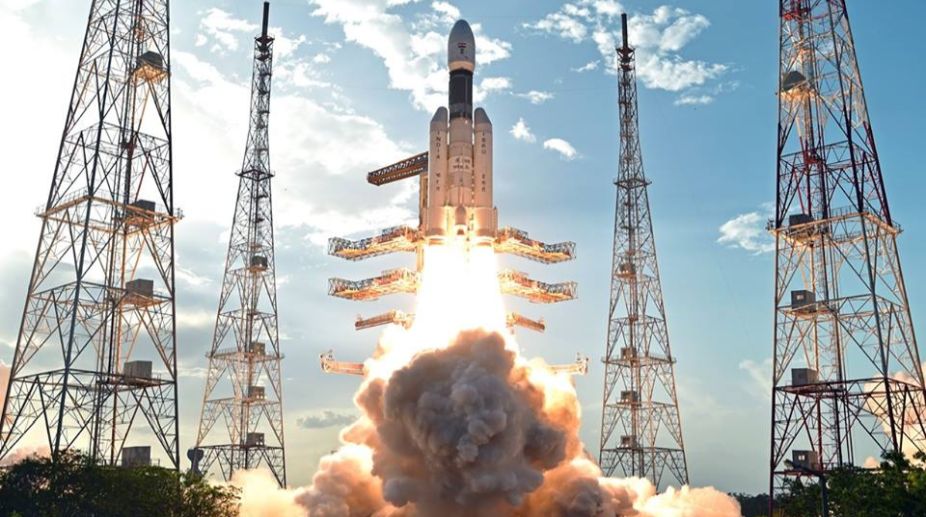Indian Space Research Organisation’s successful launch of GSLV Mk III from the Satish Dhawan Space Centre in Sriharikota on 5 June, placing the country’s heaviest satellite GSAT-19 weighing 3,136 kg into a Geosynchronous Transfer Orbit, is a giant leap in space, but it came almost two decades late.
The delay, no doubt, was beyond the control of ISRO and it gave room for China to steal a march over India by spreading its wings to assist neighbouring Afghanistan, Maldives and Nepal with their satellite projects.
Advertisement
The most significant aspect of the GSLV Mk III launch is the use of a cryogenic engine developed entirely with indigenous technology.
The rapid development of ISRO from its humble beginnings, launching of small sounding rockets to study the magnetic equator from Thumba, near Thiruvananthapuram, to launching of lighter satellites into predetermined orbits from Sriharikota posed a threat to the near monopoly of the USA and the European Space Agency in the business of multibillion dollar commercial rocket launch vehicles.
The USA masterminded the Missile Technology Control Regime in 1987 which placed an embargo on transfer of technology, to deny India joining the space age. Glavkosmos of the erstwhile USSR came to ISRO’s aid by the outright sale of seven cryogenic engines.
Through reverse engineering ISRO scientists were able to crack cryogenic technology. Cryogenic engines used in earlier GSLV flights were based on Russian designs but the one used on the GSLV Mk III is entirely of indigenous design based on gas generator cycle instead of the combustion cycle of Russian model.
To make it operational, ISRO will have to undertake one more developmental flight of GSLV Mk III which can take anywhere from six months to one year.
Meanwhile, ISRO has scheduled its next two satellites, GSAT-18 weighing 3.3 tonne and the other weighing 5.8 tonnes, to be launched by the European space agency’s Ariane spacecraft from Kourou in French Guyana.
Once GSLV Mk III becomes operational India will cease its dependence on foreign launch vehicles. India has the potential to become a leader in launching satellites because of cost benefits.
So far, ISRO has launched 180 lighter satellites from 23 nations using its Polar Satellite Launch Vehicles. Buoyed by the success of Monday’s launch, ISRO has set its eyes on a 10-tonne payload launcher for which a semi-cryogenic engine is being developed.
The heavy launcher also has the potential to undertake manned flights. The semi-cryogenic engine is part of ISRO’s plan to develop Unified Launch Vehicle for different payloads in a single launch vehicle and Reusable Launch Vehicle. Semi-cryogenic engine is cost effective compared to engines that use solid and hypergolic liquid propellants.
Its propellants are eco-friendly, safer to handle and to store. While many nations across the world have the ability and capacity to develop satellites, few have the capacity to launch them. India has now joined this select group of nations and it is cause for cheer.









